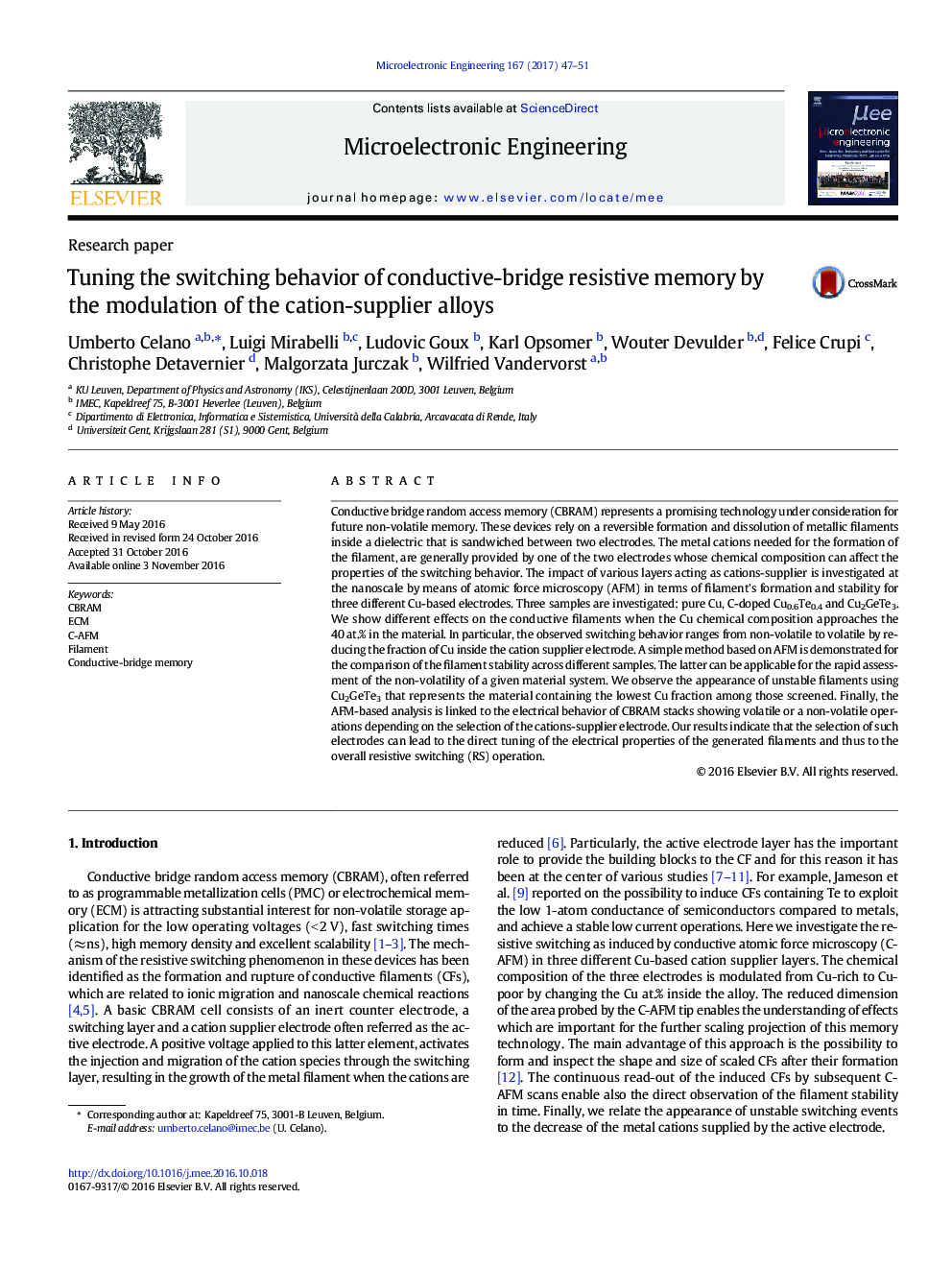| کد مقاله | کد نشریه | سال انتشار | مقاله انگلیسی | نسخه تمام متن |
|---|---|---|---|---|
| 4971054 | 1450314 | 2017 | 5 صفحه PDF | دانلود رایگان |
- Filaments are locally induced with an AFM tip in different CBRAM material systems
- Reset Current, reset voltage and the filament stability is investigated as function of the Cu-content in the active electrode material.
- The appearance of threshold switching and conventional resistive switching is related to the Cu-content in the supply layer.
Conductive bridge random access memory (CBRAM) represents a promising technology under consideration for future non-volatile memory. These devices rely on a reversible formation and dissolution of metallic filaments inside a dielectric that is sandwiched between two electrodes. The metal cations needed for the formation of the filament, are generally provided by one of the two electrodes whose chemical composition can affect the properties of the switching behavior. The impact of various layers acting as cations-supplier is investigated at the nanoscale by means of atomic force microscopy (AFM) in terms of filament's formation and stability for three different Cu-based electrodes. Three samples are investigated: pure Cu, C-doped Cu0.6Te0.4 and Cu2GeTe3. We show different effects on the conductive filaments when the Cu chemical composition approaches the 40Â at.% in the material. In particular, the observed switching behavior ranges from non-volatile to volatile by reducing the fraction of Cu inside the cation supplier electrode. A simple method based on AFM is demonstrated for the comparison of the filament stability across different samples. The latter can be applicable for the rapid assessment of the non-volatility of a given material system. We observe the appearance of unstable filaments using Cu2GeTe3 that represents the material containing the lowest Cu fraction among those screened. Finally, the AFM-based analysis is linked to the electrical behavior of CBRAM stacks showing volatile or a non-volatile operations depending on the selection of the cations-supplier electrode. Our results indicate that the selection of such electrodes can lead to the direct tuning of the electrical properties of the generated filaments and thus to the overall resistive switching (RS) operation.
98
Journal: Microelectronic Engineering - Volume 167, 5 January 2017, Pages 47-51
